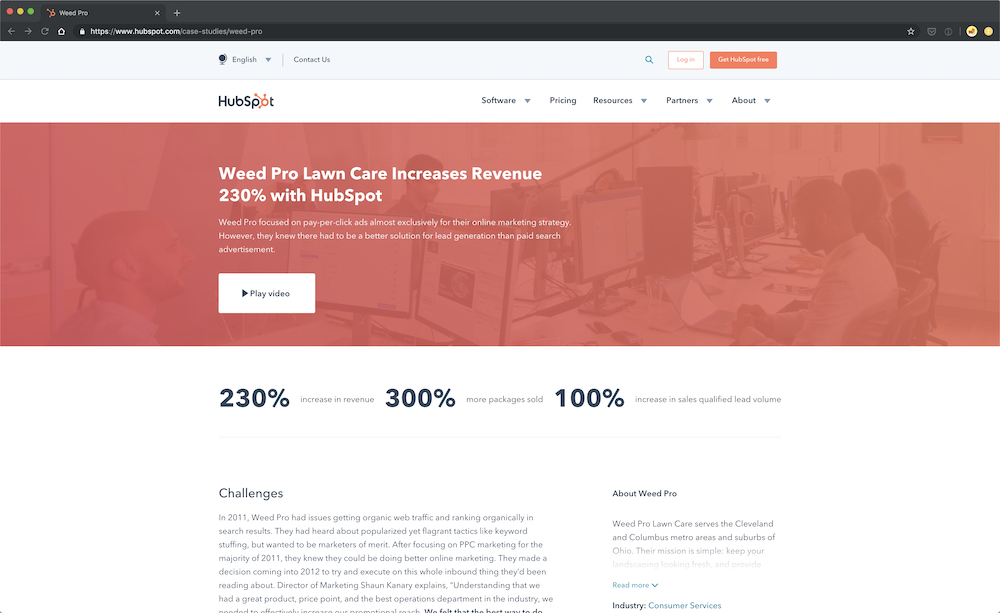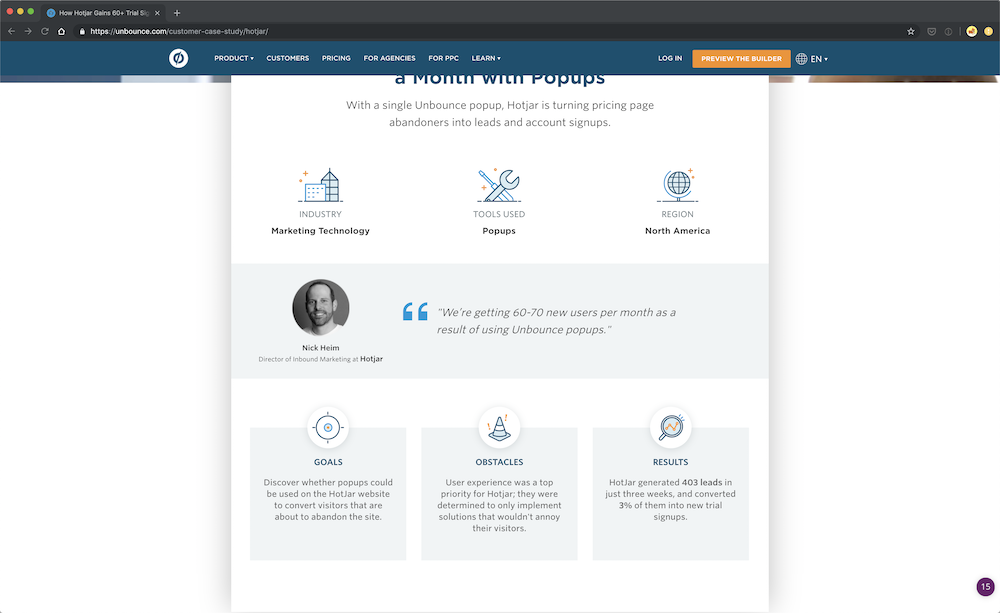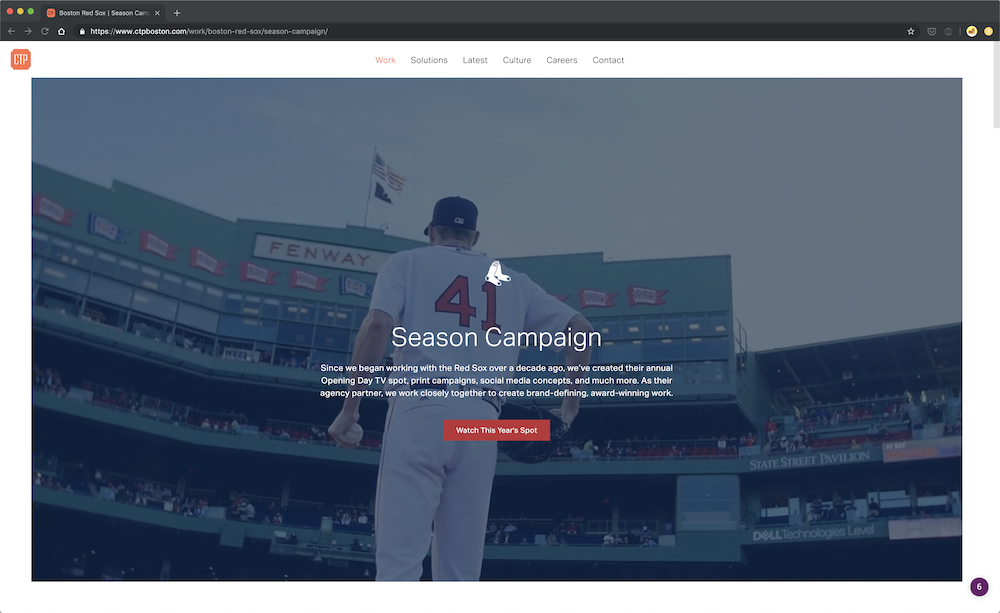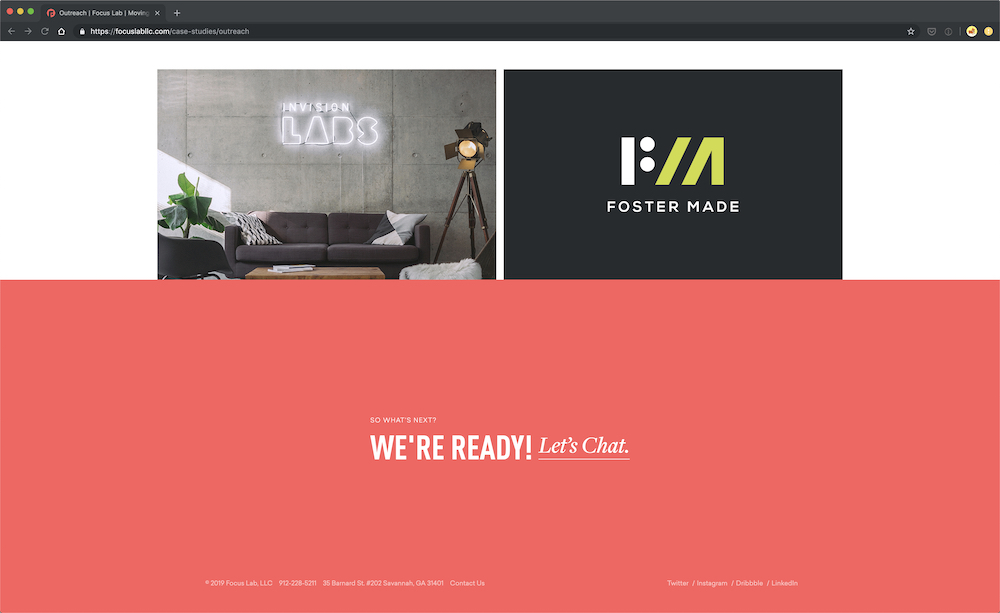Let’s talk about case studies. If I did my research correctly, case studies originated within scientific papers. Today, the term has been adapted to portfolio pieces for creative professionals and agencies. They’re quite common for designers and developers to showcase how we work with past clients or employers. Today, I want to explain to you what they are and how they can help other kinds of business too because I firmly believe that case studies are a fantastic tool for any type of business.
What are the benefits of case studies?
When done right, case studies can have a massive impact on your conversion and sales rates. That’s because case studies paint a beautiful picture of how you work and solve problems. They are a hell of a way to create trusting social proof.
Case studies offer the following benefits:
- Showcase your process and what it’s like to work with you
- Let prospects relate to others with a similar problem by showing them they are not alone
- Prove your promise and show off your results
- Build trust
- Warm up cold leads
All of those improve your conversion rate, which can directly affect your bottom line as well.
Let’s dive a little deeper.
Show what it’s like to work with you
The main benefit of case studies is that they pain a wonderful picture of what it’s like to work with you because they show off the process you use to go about solving problems.
Check out any one of HubSpot’s case studies. They have detailed profiles showing how their software helps their customers create phenomenal results. With the case study for Weed Pro, they go into great detail on exactly how Weed Pro increased their revenue thanks to HubSpot. It’s an excellent way for anyone to see what kind of experience to expect when using HubSpot.

Another example is this detailed blog post from Viper Chill and how they have optimized one of their landing pages. Tell me you weren’t intreated by their methods after you finished reading about their process?
Show off your ability to get results
Case studies are a perfect place for you to boast about your ability to get results. That’s precisely what Unbounce does in their case studies. They mention how they helped HotJar gain 403 new leads in three weeks (and converted 3% of them into trial signups). They also mention how they helped Canvas factory improve their revenue by $1.1 million. Or take a look at the case study from WordStream who increased one of their client’s revenue by 21%.

Yes, the most convincing case studies share specific numbers. But there is a variety of results you can mention beyond those. Of course, before publishing anything get permission from your clients.
If you’re a business coach, you can talk about your clients’ increased quality and quantity of leads or overall improved monthly revenue. But, you can also talk about how your client has been able to expand their business to hire full-time help. Although that’s not a specific number, it does imply that their business grew so much they can afford to hire someone which is impressive. If you’re a life coach, numbers can be tricky, but you can still paint a before, and after picture of the enjoyable lives your clients are leading. For example, you can mention the changes to their mood or lifestyle, how they got a promotion, entered into loving relationships, and so on.
Build trust and warm up cold leads
Case studies build trust in a verity of different ways. And, as trust is built, those cold leads tend to warm up pretty quickly. Let’s discuss what is it about case studies that build trust, shall we?
While you’re explaining how you solve problems and go about your projects, you’re being transparent. This transparency breed credibility, which builds trust. It’s an excellent way for leads to get to know you more too. Additionally, the more information people have, they become more at ease because they’re no longer speculating.
What goes into a case study?
Every case study should have a few key components such as a little bit of background on the client, what their problem and goals were, the process – aka the client’s experience with you – and the final result. Those are the basics.
Mastering the basics
First, explain who the client is, what their company does, or the industry they are in. Then, go ahead and start elaborating on why this client came to you by explaining the problem they were facing. Next, you want to follow up with the goal. Here is a great example from CTP and their campaign for the Boston Red Sox.

Let me give you some examples. Clients come to me for many different reasons, which is true for most – if not all – professions. Someone can come to me to help improve their blog readership, email marketing signups, preorders for their books or products, customer satisfaction or to straight up improve their monthly revenue. There are numerous ways to frame each of these 5 examples as well; that’s why it’s important to explain both the problem and the end goal.
Just because someone asks for help with their monthly sales doesn’t mean that their problem is the same as the next client with the same goal. Often times, people come to me not really knowing where their problem truly lies either. Case studies help explain to prospects that it’s okay to have similar goals and different paths of getting there.
Lead qualification
Another wonderful added bonus is that case studies help with lead qualification. They further show leads whether or not they are, in fact, in the right place. This is good because you won’t end up wasting your own time running after prospects that would have been a completely wrong fit with you to work with.
By getting a glimpse of what it’s like to work with you lets them determine if you’re, in fact, the right person for the job or the right person to solve their specific problem. The point of case studies is to show that you get hired by a variety of different clients to solve the same problem over and over again. When the prospect clearly doesn’t fit the mold, they remove themselves from your funnel, which saves you time, money, and effort from further chasing an unqualified lead.
Show vulnerability to build further trust
There are a couple of additional pieces of information you can include to further demonstrate transparency as well as your problem-solving skills. You can write about the lessons you’ve learned along the way and obstacles you faced.
That might sound a bit intimidating. But, hear me out. When you mention how something unexpected occurred, you’re further proving you’re great at handling various situations in order to do your job. That builds trust. After all, people don’t trust things that are 100% perfect. That’s because bad or poor reviews create credibility. So, when you admit to something not going 100% according to plan, you’re proving that you can still get the job done when things go wrong.
Rich reviews drive engagement and people stay on site longer. Bad reviews are a brilliant way of showing that if something does go wrong you have credibility in how you deal with the issue. It shows you care about the customer.
Marina Cheal, Chief Marketing Officer of Reevoo
Conclude with the final outcome
Of course, you want to show off how the project turned out. That’s the whole point of the case study, after all. The outcome shows off your amazing skills and potential. It’s the proof of your promise.
Talk about how you met or exceed the goals you set out to achieve. Like I said before, add as many numbers as you can. Also, list as many outcomes as you can. Just because the client hired you to help them lose weight doesn’t mean you can’t also mention any other by-products of your weight loss together such as the client running a marathon, quitting smoking, or improving their overall mood or even cholesterol levels.
End with a call to action
Don’t forget to have a quick call to action at the very end. It doesn’t have to be pushy or sales. It just has to be there. Otherwise, it’s a missed opportunity to capture a highly impressed lead. A simple “schedule a call to see if we can get you similar results” will do the trick – or something along the lines. Have a look at Focus Lab’s case studies for inspiration.

Case study formats
Case studies can come in a variety of formats. Choose one that makes the most sense for your business based on how your audience likes to consume content. This can be a blog post, an infographic, an audio interview, a presentation, a video, or even a PDF. The world is your oyster. Though the most common version is a simple web page.
The takeaway
Case studies dominate the world of creative portfolios. I’m here to tell you they are a super powerful tool that any business can leverage. They are persuasive because they tell vivid stories about how great your company is and how it serves your clients’ problems. It’s a fantastic way to build trust, social proof, and secure more leads.


